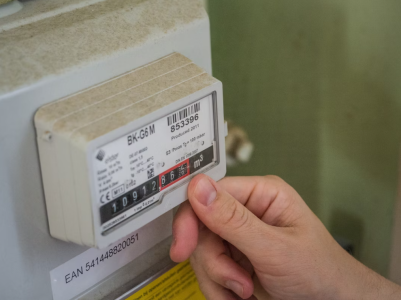5 things that drain the most electricity in your home
- Replies 0
A shocking electricity bill can ruin an otherwise normal month, and with the rising cost of living, even small increases are hitting households harder than ever.
Many people don’t realize just how much power the everyday comforts in their homes quietly consume until the charges pile up.
While giving up basic conveniences is not realistic, becoming aware of the biggest energy drains can help you manage usage more strategically.
By knowing where your money is really going, you can make simple adjustments that bring down costs without making your home uncomfortable.
1. HVAC Systems
Heating and cooling consistently take the top spot as the most expensive contributor to household electricity usage, often eating up close to half of the total bill. Air conditioning in the summer or space heaters in the winter may feel essential, but their constant operation quickly adds up in dollars.
Even small actions, like sealing cracks in windows, adjusting thermostats by just a few degrees, or using fans to circulate air, can lower the demand on these systems. It may be hard to cut back when temperatures are extreme, but being more mindful about when and how long you run HVAC equipment can make a noticeable difference over time.
2. Major Appliances
The convenience of modern appliances like ovens, refrigerators, and dishwashers comes at a hidden cost, since they rank among the most energy-hungry items in your home. Refrigerators run 24/7, ovens demand high bursts of power, and dishwashers use both heat and water in every cycle.
While unplugging large appliances isn’t realistic, there are small shifts that can lower energy use, such as limiting unnecessary preheating, keeping fridge doors closed as much as possible, and waiting until the dishwasher is completely full before running it. Over the course of a month, these incremental changes can add up to meaningful savings.
Also read: Energy bills near $800 for some households—what’s going on in this state?
3. Lights
Leaving lights on in empty rooms may seem harmless, but it steadily drains electricity and inflates monthly costs. The problem becomes more significant if your home still uses older bulbs, which burn through much more power than modern LED options.
Switching your home to LEDs drastically lowers energy use while lasting far longer, meaning you buy replacement bulbs less often as well. Developing the habit of turning lights off whenever you leave a room may feel like a small act, but it can be one of the simplest and most effective ways to cut wasted energy.
4. Entertainment Electronics
Televisions, gaming consoles, computers, and streaming devices all continue to use energy when left in standby mode, quietly draining power without anyone noticing. Shutting these systems down completely instead of letting them “sleep” prevents those hidden costs from building up on your bill.
Beyond that, turning off devices overnight or while you’re away from home ensures you’re not paying for electricity you don’t actually use. With households relying more heavily on electronics than ever before, those small percentages quickly add up into an expense that could easily be avoided.
Also read: Cut $128.52 off your energy bill! Try this simple trick
5. Water Heating
The cost of heating water for showers, laundry, and dishwashing is often overlooked, yet it can be one of the largest contributors to your monthly energy bill. Long, hot showers and frequent hot-water laundry cycles push demand higher, and in most cases, those habits can be adjusted without sacrificing too much comfort.
Choosing to take shorter showers, washing clothes in cold water, or lowering the thermostat on your water heater are all practical ways to cut down on unnecessary consumption. Since water heating is a hidden drain that few think about, making small but consistent changes here can save more money than most people realize.
Read next: Stop overpaying! AC experts reveal the costly mistake adding hundreds to your energy bill

Which of these energy drains surprised you the most, and which change do you think would be easiest for you to try at home? Share your thoughts and energy-saving tips in the comments to help others cut their bills too.
Many people don’t realize just how much power the everyday comforts in their homes quietly consume until the charges pile up.
While giving up basic conveniences is not realistic, becoming aware of the biggest energy drains can help you manage usage more strategically.
By knowing where your money is really going, you can make simple adjustments that bring down costs without making your home uncomfortable.
1. HVAC Systems
Heating and cooling consistently take the top spot as the most expensive contributor to household electricity usage, often eating up close to half of the total bill. Air conditioning in the summer or space heaters in the winter may feel essential, but their constant operation quickly adds up in dollars.
Even small actions, like sealing cracks in windows, adjusting thermostats by just a few degrees, or using fans to circulate air, can lower the demand on these systems. It may be hard to cut back when temperatures are extreme, but being more mindful about when and how long you run HVAC equipment can make a noticeable difference over time.
2. Major Appliances
The convenience of modern appliances like ovens, refrigerators, and dishwashers comes at a hidden cost, since they rank among the most energy-hungry items in your home. Refrigerators run 24/7, ovens demand high bursts of power, and dishwashers use both heat and water in every cycle.
While unplugging large appliances isn’t realistic, there are small shifts that can lower energy use, such as limiting unnecessary preheating, keeping fridge doors closed as much as possible, and waiting until the dishwasher is completely full before running it. Over the course of a month, these incremental changes can add up to meaningful savings.
Also read: Energy bills near $800 for some households—what’s going on in this state?
3. Lights
Leaving lights on in empty rooms may seem harmless, but it steadily drains electricity and inflates monthly costs. The problem becomes more significant if your home still uses older bulbs, which burn through much more power than modern LED options.
Switching your home to LEDs drastically lowers energy use while lasting far longer, meaning you buy replacement bulbs less often as well. Developing the habit of turning lights off whenever you leave a room may feel like a small act, but it can be one of the simplest and most effective ways to cut wasted energy.
4. Entertainment Electronics
Televisions, gaming consoles, computers, and streaming devices all continue to use energy when left in standby mode, quietly draining power without anyone noticing. Shutting these systems down completely instead of letting them “sleep” prevents those hidden costs from building up on your bill.
Beyond that, turning off devices overnight or while you’re away from home ensures you’re not paying for electricity you don’t actually use. With households relying more heavily on electronics than ever before, those small percentages quickly add up into an expense that could easily be avoided.
Also read: Cut $128.52 off your energy bill! Try this simple trick
5. Water Heating
The cost of heating water for showers, laundry, and dishwashing is often overlooked, yet it can be one of the largest contributors to your monthly energy bill. Long, hot showers and frequent hot-water laundry cycles push demand higher, and in most cases, those habits can be adjusted without sacrificing too much comfort.
Choosing to take shorter showers, washing clothes in cold water, or lowering the thermostat on your water heater are all practical ways to cut down on unnecessary consumption. Since water heating is a hidden drain that few think about, making small but consistent changes here can save more money than most people realize.
Read next: Stop overpaying! AC experts reveal the costly mistake adding hundreds to your energy bill
Key Takeaways
- Electricity costs are driven mainly by heating and cooling systems, large appliances, lighting, entertainment electronics, and hot water use.
- Each of these areas can be managed more effectively with simple, practical changes that reduce wasted power.
- From sealing drafts and switching to LED bulbs to shutting off devices completely and adjusting hot water usage, small shifts add up to measurable savings.
- By identifying the biggest drains in your home, you can take control of your energy bill without giving up comfort or convenience.







